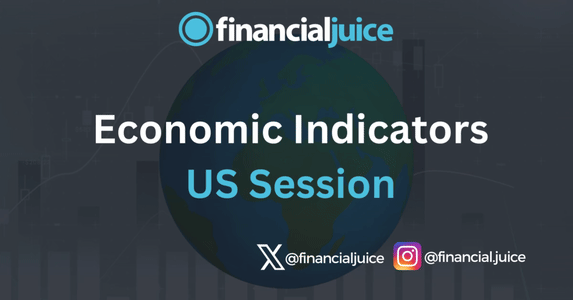
Week Ahead: Economic Indicators (US)
Hey, Traders!
For the March 11th week, here is a list of all of the major economic indicators being released during the US Session, with a brief synopsis of what they represent and what to possibly expect from the markets in reaction.
Tuesday 12th March
08:30 ET
US CPI for February
The US Consumer Price Index is a measure of the average change over time in the prices paid by urban consumers for a basket of goods and services.
It tracks price movements from the perspective of the consumer and is a key indicator of inflation.
The CPI is divided into various categories such as food, energy, housing, transportation, and medical care, providing insights into price trends across different sectors of the economy.
Changes in the CPI can impact consumers’ purchasing power, cost of living adjustments, and monetary policy decisions made by central banks.
What to Expect
Markets are paying attention to inflation reports.
Higher-than-expected inflation could cause markets to push back on Fed rate cut bets, which could cause weakness in US stocks, and strength in the dollar.
The reverse is also true, lower-than-expected inflation, would likely cause the markets to bring forward rate-cut bets, which would cause strength in US stocks and weakness in the dollar.
Societe Generale noted that they view the lingering, sticky price issue as primarily concentrated in the rent component. The PCE-deflator, which is less reliant on rent, has exhibited greater moderation. If CPI rents can moderate, the Fed should be more willing to cut.
US CPI Prep Article – Read Here
Wednesday 13th March
10:30 ET
Weekly EIA Crude Oil Inventories
The Weekly Energy Information Administration Crude Oil Inventories report provides data on the change in the number of barrels of crude oil held in inventory by commercial firms in the United States over the past week.
It is an indicator for assessing supply and demand dynamics in the oil market and can influence crude oil prices.
What to Expect
A larger-than-expected increase in inventories suggests oversupply conditions, potentially putting downward pressure on oil prices, while a larger-than-expected decrease indicates tightening supply conditions, which could lead to higher prices.
Thursday 14th March
08:30 ET
US PPI for February
The US Producer Price Index measures the average change over time in the selling prices received by domestic producers for their output. It tracks price movements from the perspective of the seller and is an important indicator of inflationary pressures in the economy.
The PPI is calculated for various stages of production, including finished goods, intermediate goods, and crude goods, providing insights into price trends at different levels of the supply chain.
Changes in the PPI can influence the decisions of businesses regarding pricing strategies, production levels, and investment, and can also impact consumer prices (CPI), wages, and monetary policy decisions, making it, in some ways, a leading indicator of inflation.
What to Expect
Inflation is closely watched by the markets.
Higher than expected inflation could prompt the markets to push back on bets for rate cuts this year, which would cause weakness in US stocks, and strength in the dollar.
The inverse is also true. If inflation comes in lower, this could mean that the Fed is getting closer to their inflation target, which could cause markets to ramp up bets for rate cuts this year, which would cause strength in US stocks, and weakness in the dollar.
US Retail Sales
US Retail Sales is a key economic indicator that measures the total sales at retail establishments within the United States.
It includes sales of goods and services from a wide range of retail stores, such as clothing stores, grocery stores, restaurants, and online retailers.
Retail sales data provides insights into consumer spending patterns, which is a crucial component of overall economic activity.
Rising retail sales typically indicate a healthy economy, while declining sales may signal economic weakness.
What to Expect
As this release is at the same time as the PPI data, it is likely to be overshadowed by this. However, if a large deviation is seen here, and not in the PPI data, attention could turn to this.
If it comes out higher than expected, markets will balance the risks between the potential upside inflation risk that increased retail sales could cause, as well as the lower likelihood of a recession in the US.
Typically, markets still see this release as ‘good news is bad news’, which would mean that higher than expected retail sales could cause weakness in US stocks, and strength in the dollar.
Unicredit notes that Retail sales likely rebounded in February after contracting 0.8% in January, which was primarily driven by one-off factors such as bad weather and an overhang from a strong holiday shopping season.
Weekly US Initial & Continued Jobless Claims
Weekly US Initial Jobless Claims and Continued Jobless Claims are key economic indicators that provide insights into the labor market’s health.
Initial Jobless Claims refer to the number of individuals who file for unemployment benefits for the first time during a given week. This metric helps gauge the rate of layoffs and indicates the labor market’s immediate health.
A lower number of initial claims suggests a stronger job market, while a higher number may indicate economic weakness.
Continued Jobless Claims, on the other hand, represent the number of individuals who continue to receive unemployment benefits after their initial claim. This figure reflects the ongoing level of unemployment and can indicate the persistence of joblessness in the economy.
What to Expect
As this release is coming out at the same time as the US PPI, it is likely to be overshadowed by this.
Nonetheless, higher-than-expected Jobless Claims indicate higher unemployment, which is often seen by the markets as a downside risk to inflation. This could cause strength in US stocks and weakness in the dollar, as it could cause traders to push forward their bets for Fed rate cuts.
Friday 15th
10:00 ET
The University of Michigan Sentiment March Prelim
The University of Michigan Consumer Sentiment Index is a monthly survey that measures the confidence and optimism of US consumers about the economy.
It provides insight into consumers’ perceptions of current economic conditions and their expectations for the future.
The index is based on surveys conducted with a representative sample of households regarding their views on personal finances, business conditions, and buying intentions.
High consumer sentiment generally indicates optimism about economic prospects, which can translate into increased consumer spending and economic growth. Conversely, low consumer sentiment may suggest pessimism and potential retrenchment in spending, which could dampen economic activity.
The University of Michigan sentiment report also contains expectations for both 1 and 5-year ahead inflation expectations, which the markets pay attention to.
What to Expect
High sentiment would indicate that consumers are doing well in the face of high interest rates, and have general optimism over economic conditions, which could increase the chances for a soft landing for the economy. However, if consumer sentiment is much higher, this could be an upside inflation risk, as it could underline higher consumer spending.
Having said this, the markets are more likely to react to any meaningful deviations in inflation expectations. Higher 1 and/or 5-year-ahead inflation expectations could cause markets to pull back on bets for Fed rate cuts this year, which would cause weakness in US stocks, and strength in the dollar.







